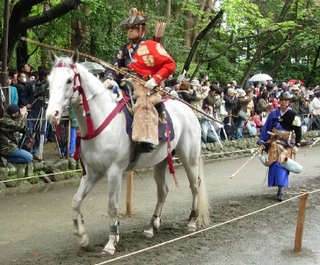Harajuku is a well known art and design and fashion center of Tokyo. The main boulevard, Omote-sando, is lined with elegant shops and haute couture.

One of the side streets, the notably Takeshita-dori I walk through every time to go to the Nippon Tougei Club, teem with teenagers on the hunt for the next big thing.



Also, high school girls and boys walk around gazing at the outfits, and wishing they were (perhaps) wearing something else? The boys wear suits with sneakers and the girls really short skirts.


Japenese people are very funny with english and can make the weirdest mistakes in english words and sayings. It just makes you smile. Like a girl wearing a saying on the front of her
t-shirt high up on the right spot:"My is always fresh!"
There are lots of little restaurants, hamburger places (of course Mac Donald's) and sweet pancake corner shops.


One of the side streets, the notably Takeshita-dori I walk through every time to go to the Nippon Tougei Club, teem with teenagers on the hunt for the next big thing.



Also, high school girls and boys walk around gazing at the outfits, and wishing they were (perhaps) wearing something else? The boys wear suits with sneakers and the girls really short skirts.


Japenese people are very funny with english and can make the weirdest mistakes in english words and sayings. It just makes you smile. Like a girl wearing a saying on the front of her
t-shirt high up on the right spot:"My is always fresh!"
There are lots of little restaurants, hamburger places (of course Mac Donald's) and sweet pancake corner shops.








































